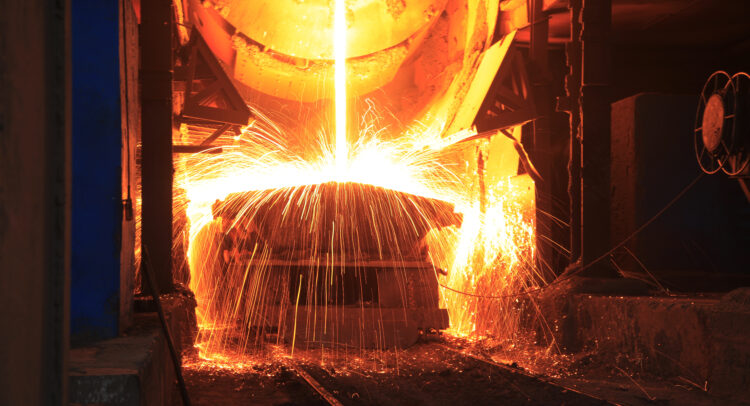U.S. Steel (NYSE:X) has recently had its buyout agreement opposed, but the company’s disappointment could present a promising opportunity for investors. As part of the strategic review process that began in August 2023, the steelmaker entered into an agreement to be acquired by Nippon Steel (NISTF) in December last year. However, it is possible that the takeover might not proceed as planned. This uncertainty has led to fluctuations in U.S. Steel’s stock price, which has recently trended downward.
Nevertheless, the uncertainty surrounding the U.S. Steel deal may have produced a window for investors to swoop in and wave in cheap shares.
The Challenges Faced by U.S. Steel
U.S. Steel was once a symbol of proud American industrialism. The steel business declined dramatically in the United States, and for U.S. Steel, which did not update production methods, the decline was drastic.
Compounding the challenges, once ranked as the world’s 12th-largest steel company, U.S. Steel has now slipped to 27th place, with its global market share dwindling from over 10% in 1950 to less than 1% in 2023.
Further, it faces increased competition from domestic rivals like Nucor (NYSE:NUE) and Cleveland-Cliffs (NYSE:CLF). Also, with China as the world’s dominant steel producer, it makes sense for U.S. Steel to be taken over. However, the potential acquisition by Japan’s Nippon Steel appears nearly dead.
About the Nippon Deal
In December 2023, following an exhaustive and comprehensive review by a committee of its Board of Directors, U.S. Steel Corporation entered into a definitive agreement to merge with Nippon Steel. This decision came after a strategic alternatives review process that began in August 2023, during which U.S. Steel considered proposals from multiple parties, including an offer from Cleveland-Cliffs. The bidding process eventually led to a $55-a-share cash offer from Japan’s Nippon Steel.
U.S. Steel shareholders voted overwhelmingly to approve the planned acquisition on April 12, 2024. The proposed acquisition is now under regulatory scrutiny.
Political Opposition to the Deal
Despite the potential benefits of the Nippon Steel acquisition, U.S. politicians from both parties have opposed the deal, citing concerns over job losses and the importance of keeping U.S. Steel in American hands.
This opposition reached a breaking point when President Joe Biden publicly criticized the deal in March, causing U.S. Steel’s shares to plummet 18% over two days of trading.
Is U.S. Steel an Investment Opportunity?
If the deal with Nippon Steel does completely fall apart, U.S. Steel could still find itself in play.
Cleveland-Cliffs, which previously proposed a $54 cash and stock offer for U.S. Steel, was outbid by Nippon’s superior offer. However, there’s speculation that CLF could revive its interest in forming a larger and more resilient North American steel powerhouse.
Additionally, other domestic and international steel companies, or private equity firms, could step in to acquire U.S. Steel, if they see potential value in revitalizing the once-iconic brand.
Also working in favor of individual investors interested in U.S. Steel is that steel prices are moving higher. Hot rolled coil, a benchmark steel product, currently costs about $850 a ton, up significantly year-over-year. Analyst estimates now include higher steel prices and guess what, Wall Street now expects U.S. Steel to generate $1.8 billion in 2024 earnings before interest, taxes, depreciation, and amortization (EBITDA). This is a $200 million increase in its forecast from just last summer.
U.S. Steel would also be positioned to gain from President Biden’s plan to increase tariffs on Chinese-produced steel. So the company has a number of factors that suggest that it is currently priced well, and if another suitor steps in with a premium offer, investors could get to cash in.

Investor Takeaway
U.S. Steel’s search for the right buyer amidst political pressure highlights the challenges faced by the company and the broader implications on domestic manufacturing. While the company explores alternative strategies or seeks a buyer that aligns with the interests of both shareholders and policymakers, there is comfort for investors in knowing that U.S. Steel seems reasonably valued at its current price point.
















